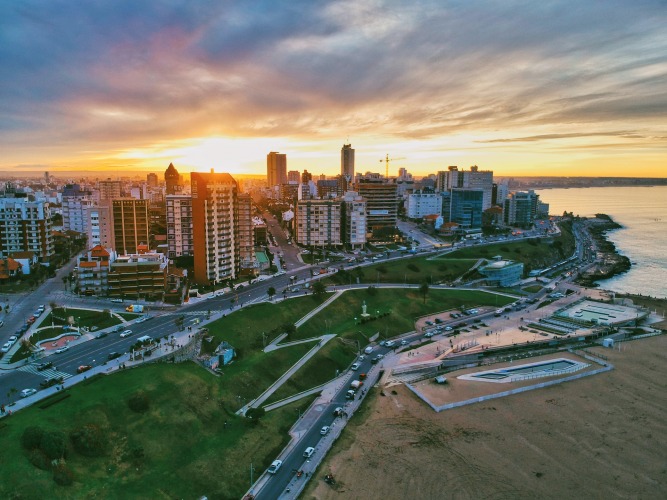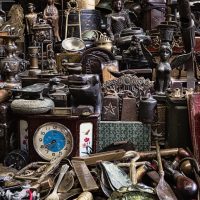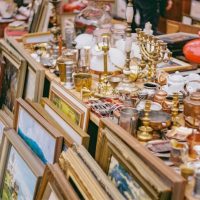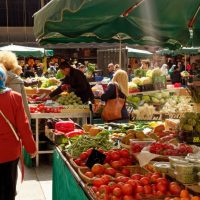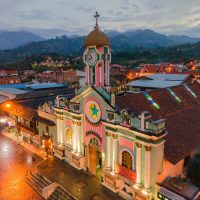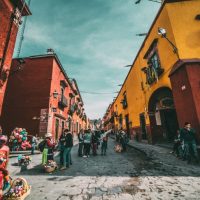One of the best ways to learn about a culture is to explore its flea markets, and Argentina is certainly a good example of this truth.
Argentinians have a reputation for being passionate about their food, and about life in general, and this comes through in sprawling flea markets around the country.
About a third of the nation’s population lives around Buenos Aires, one of the world’s largest cities, so it makes sense that the biggest flea markets are in that area.
Contents
- 1. Feria de San Telmo
- 2. Feria del Anticuario
- 3. El Mercado de las Pulgas Dorrego
- 4. Cordoba’s Flea Market
- 5. Mercado de Concentration y Abasto
- 6. Puerto Iguazu
- 7. Recoleta Market
- 8. Feria de Palermo Viejo
- 9. Feria de Plaza Serrano
- 10. Feria Artesanal de Parque Centenario
- 11. Feria de Mataderos
- 12. Feria de Libros Parque Rivadavia
- 13. Feria Puerto Madero
- 14. Feria de Artesanos
- 15. Feria San Juan
- The 15 Best Flea Markets in Argentina – Summary Table
- Argentina Safety Overview
- Frequently Asked Questions
1. Feria de San Telmo
Feria de San Telmo is a flea market that happens every Sunday in the San Telmo district.
As many as 20,000 people will be at this market on any given Sunday, examining all the antiques and handmade art that is offered.
San Telmo was once an upscale area that featured a lot of Tango shows at small venues.
That has faded in recent times, but the area itself has become a huge flea market.
The narrow cobblestone streets remind a person of Europe.
There are a lot of small bars, restaurants, and other places to eat and relax as you explore.
This is one of the more famous flea markets in Buenos Aires and is often visited by tourists.
2. Feria del Anticuario
Feria del Anticuario is in the elegant northern area of Buenos Aires called Acassuso.
Many of the stalls and shopping areas have a definite 1920s to 1940s vibe.
It is very colorful with more antiques, rare art, and curiosities than you could possibly see in a day.
It is in an area surrounded by elegant residences.
More than 70 dealers will have antiques on display.
They have been in operation since 1997 and were started as a historical and cultural celebration of the city.
It continues to grow and gain popularity because of all the treasures offered for sale.
Some items are pricey, but worth it, and there are great deals available too.
3. El Mercado de las Pulgas Dorrego
El Mercado de las Pulgas Dorrego has lost some of its edginess and personality, but it is still a great place to spend a day and soak up Argentinian culture.
It was once a maze where you could get lost exploring all that was offered.
It has undergone modernization and is now well organized and operates more smoothly.
There is glassware, furniture, brass, clothing, pictures, and, of course, a lot of food.
Some offer replicas and some offer original items, and you need to be able to tell the difference.
There are about 150 booths spread over 13,000 kilometers.
4. Cordoba’s Flea Market
Cordoba is Argentina’s second-largest city, in the northern part of the country.
The flea market is in the Guemes District, also known as the arts district, and is very colorful.
There are a lot of handmade crafts as well as homemade food available.
It is open Friday through Sunday each week.
The market started informally in the 70s with people setting up booths.
Since then, it has grown steadily and has become its own event.
There are some antiques, but art is the major part of this market.
There are many handmade items; art, plants, and flowers, in addition to many kinds of art.
5. Mercado de Concentration y Abasto
Mercado de Concentration y Abastois in San Salvador, in the northwest part of the country near the Andes mountains.
It is a huge farmers market, filled with every kind of fruit and vegetable you can imagine.
There are also a lot of plants available.
It is in a rural area and has 13,000 residents.
If you are anywhere close to this area, and like fresh food, this is the place to go.
It is primarily a farmer’s market, but there are some prepared and homemade food items for sale.
It is in a fairly remote area and you may not find English speakers.
6. Puerto Iguazu
Puerto Iguazu is another remote place with a cool flea market.
This is the gateway to one of Argentina’s national parks.
It is on the banks of the Parana River, and at the spot where Argentina, Brazil, and Paraguay meet.
It is a colorful flea market with a lot of handmade items and homemade food.
Several cultures are represented here, and it is a good place to learn about the people of those cultures.
Cash is required, but you may be able to use Brazilian and Paraguay money as well as Argentinian currency.
While the market is interesting, the natural beauty of the area is what makes it inviting.
7. Recoleta Market
Recoleta Market takes us back to Buenos Aires.
This market has about 200 vendors and is open Saturdays and Sundays in the Recoleta area of the city.
There are high-quality crafts and artisan items like silver, mate gourds, leather, jewelry, and pottery, covering modern and traditional products.
There is also a lot of food, music, acrobats, and street performers.
It is regarded as the best place in Buenos Aires to get high-quality handmade items at a reasonable price.
Stores in Buenos Aires sell the same items at much higher prices.
8. Feria de Palermo Viejo
Feria de Palermo Viejo is an arts-focused flea market in the Palermo Soho region of Buenos Aires.
It is near the waterfront on the eastern side of the city and usually has around 50 vendors.
It is open Saturday and Sunday throughout the year and on holidays.
There are a lot of handmade items, both crafts, and art.
There is new and used clothing and a lot of different creative products.
It is an outdoor market, and a great stop if you are visiting this part of Buenos Aires.
It is a good place to find unusual gifts and keepsakes.
Palermo Soho is a popular shopping area, and this market adds to that vibe.
There are a lot of small restaurants in the area.
9. Feria de Plaza Serrano
Feria de Plaza Serrano is another relatively small flea market in the Palermo Soho district.
It is just a few blocks from the market at Palermo Viego, and you could easily visit both in a day.
This one also has about 50 vendors and is open on weekends.
This one is at Plaza Serrano and is on streets lined with cafes, bars, and restaurants.
The area is known for designer clothing shops and boutiques, and several of them set up shop outside along Honduras Street.
You can get bargains on locally designed clothing and accessories, as well as jewelry and pipes for tobacco or other substances.
10. Feria Artesanal de Parque Centenario
Feria Artesanal de Parque Centenario is an off-the-beaten-path market that caters more to Argentinians than to tourists.
It is a few blocks from the tourist area, but well worth the detour.
It is one of the larger markets in Buenos Aires with more than 300 vendors.
It is a more traditional flea market with a lot of new and used items that people who live there need, much like flea markets in the United States.
There is art, clothing, food, tools, homemade wines, and various kinds of crafts.
The market surrounds a large city park, with streets lined with booths in a circular fashion.
11. Feria de Mataderos
Feria de Mataderos is another large flea market off the beaten path.
You can learn a lot about the culture here, and get items related to gauchos, Argentina’s cowboys.
There are new and used hats, purses, scarves, clothing, as well as a plethora of crafts.
There are also some eastern mystics and new age crafts and medicines available.
This market caters more to Argentine citizens than to foreign tourists, so it is a good place to soak up the local culture.
This market is in Palermo, located on Honduras street, near Palermo VIego’s market.
12. Feria de Libros Parque Rivadavia
Feria de Libros Parque Rivadavia is a book lover’s dream come true.
Buenos Aires has more bookstores per capita than any city in the world.
That means there are a lot of used books, and a lot of them are at this flea market.
Vendors line the streets leading to and around the park, and many are selling books, magazines, and music.
There are magazines from the 1950s through the 1980s, in addition to new and used books in English, Spanish and Portuguese.
13. Feria Puerto Madero
Feria Puerto Madero is a small flea market so far off the beaten path that many residents of Buenos Aires may not know about it.
It has about 150 vendors selling used items of many kinds, much like a North American market.
It is in a revamped dockside area near the ocean, lined with brick buildings that were once warehouses.
There are a lot of live musical performances to add to the atmosphere.
Also, a lot of upscale restaurants are in the immediate area.
There is a boardwalk lined with some of the best barbeques in the city.
It is next to the Ecological Reserve and bike rentals are available for both the reserve and the market.
14. Feria de Artesanos
Feria de Artesanos may well be the most southern flea market in the world, at the south end of Patagonia and the nation of Argentina.
It is in the beautiful mountains of Patagonia and the town of Ushuaia, one of the southern-most cities in the world.
It has typical flea market fare, such as key rings, jewelry, hats, scarves, and handmade items.
Homemade food is also available and a big part of the market.
Crafts made with magnets are also popular.
Native crafts and art are also sold here.
It is located in a long string of colorful connected buildings.
This area can be cold, and it is in a heated area.
15. Feria San Juan
Feria San Juan is a small market in San Juan, in the Andes mountains not far from the border with Chile.
There are the usual clothing and handmade craft items for sale.
You may also buy birds and other small animals here.
San Juan is a modern city of 110,000 people and is a wine-making area.
You may find some locally made wine here to go with the homemade food you find.
Wine is relatively cheap here, but there is a limit on how much you may bring back to the United States.
The 15 Best Flea Markets in Argentina – Summary Table
| Flea Market | Address |
|---|---|
| Feria de San Telmo | Defensa 1086, C1065AAT CABA, Argentina |
| Feria del Anticuario | Elcano 735, ESTACIÓN " LAS BARRANCAS " DEL TREN DE LA COSTA, B1640 ACASUSSO, SAN ISIDRO, Provincia de Buenos Aires, Argentina |
| El Mercado de las Pulgas Dorrego | Av. Dorrego 1650, 1414 CABA, Argentina |
| Cordoba's Flea Market | Guemes District |
| Mercado de Concentration y Abasto | Av. Almte. Brown 368, San Salvador de Jujuy, Jujuy, Argentina |
| Puerto Iguazu | Av. Tres Fronteras 122 3370 PUERTO IGUAZÚ Argentina |
| Recoleta Market | Plaza Alvear in Recoleta, Buenos Aires. |
| Feria de Palermo Viejo | Plaza Serrano, Serrano 1580, C1414DFF CABA, Argentina |
| Feria de Plaza Serrano | Honduras 5001, C1414BMQ CABA, Argentina |
| Feria Artesanal de Parque Centenario | Av. Patricias Argentinas 822, Buenos Aires, Argentina |
| Feria de Matadors | Av. de los Corrales, Av. Lisandro de la Torre &, Buenos Aires, Argentina |
| Feria de Libros Parque Rivadavia | Beauchef 100, C1424 C1424BDU, Buenos Aires, Argentina |
| Feria Puerto Madero | Av. Alicia Moreau de Justo 1080, C1107AAV CABA, Argentina |
| Feria de Artesanos | Mar del Plata, Argentina |
| Feria San Juan | Av. Libertador Gral. San Martín 960-980, San Juan, Argentina |
Argentina Safety Overview
READ THE FULL REPORT: Argentina Safety Review
Safety Index:
- OVERALL RISK: LOW
- TRANSPORT & TAXIS RISK: LOW
- PICKPOCKETS RISK: MEDIUM
- NATURAL DISASTERS RISK: MEDIUM
- MUGGING RISK: MEDIUM
- TERRORISM RISK: LOW
- SCAMS RISK: MEDIUM
- WOMEN TRAVELERS RISK: MEDIUM
Frequently Asked Questions
What currency is used in Argentina?
The Argentine Peso is the standard currency used in cash transactions.
The dollar sign used in America is used there, but it will almost always refer to the Peso and not the Dollar.
The American Dollar is exchanged for about 134 Argentine Pesos.
How are Argentinian flea markets different than the ones in the United States?
The sale of new and used items, both commercially and handmade, is common in flea markets in both countries.
Argentinian flea markets have more of a festival-type atmosphere with more music and entertainment to go along with the shopping experience.
Street performers are also more common in Argentinian markets.
Are credit cards accepted?
In larger cities, credit cards are often accepted.
They are not accepted at places like flea markets.
It is a good idea to have a credit card when you travel to Argentina, but you will need to have some cash on hand as well.
Can you barter with American dollars?
Argentina has what is called a Blue Market, similar to what Americans call a Black Market.
This is especially true at flea markets where cash is king and income may not be reported.
It is common to barter with American dollars at places like flea markets, and at times dollars are preferred when the exchange rate hits a certain level.
What is the preferred method of payment in Argentina?
Cash is preferred by most merchants and is normally required in places like flea markets or any open-air market.
ATMs are everywhere and you can easily get cash there.
